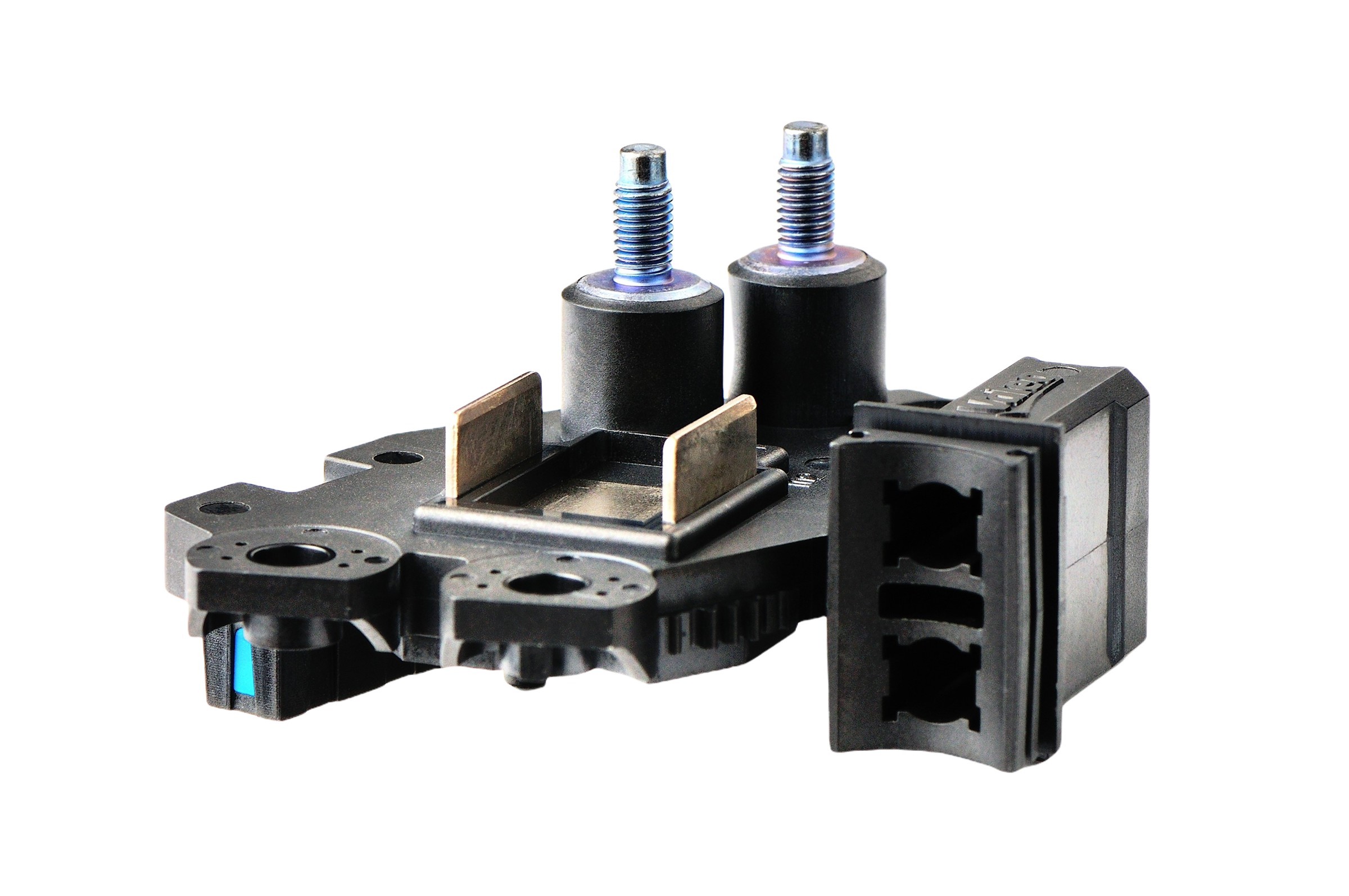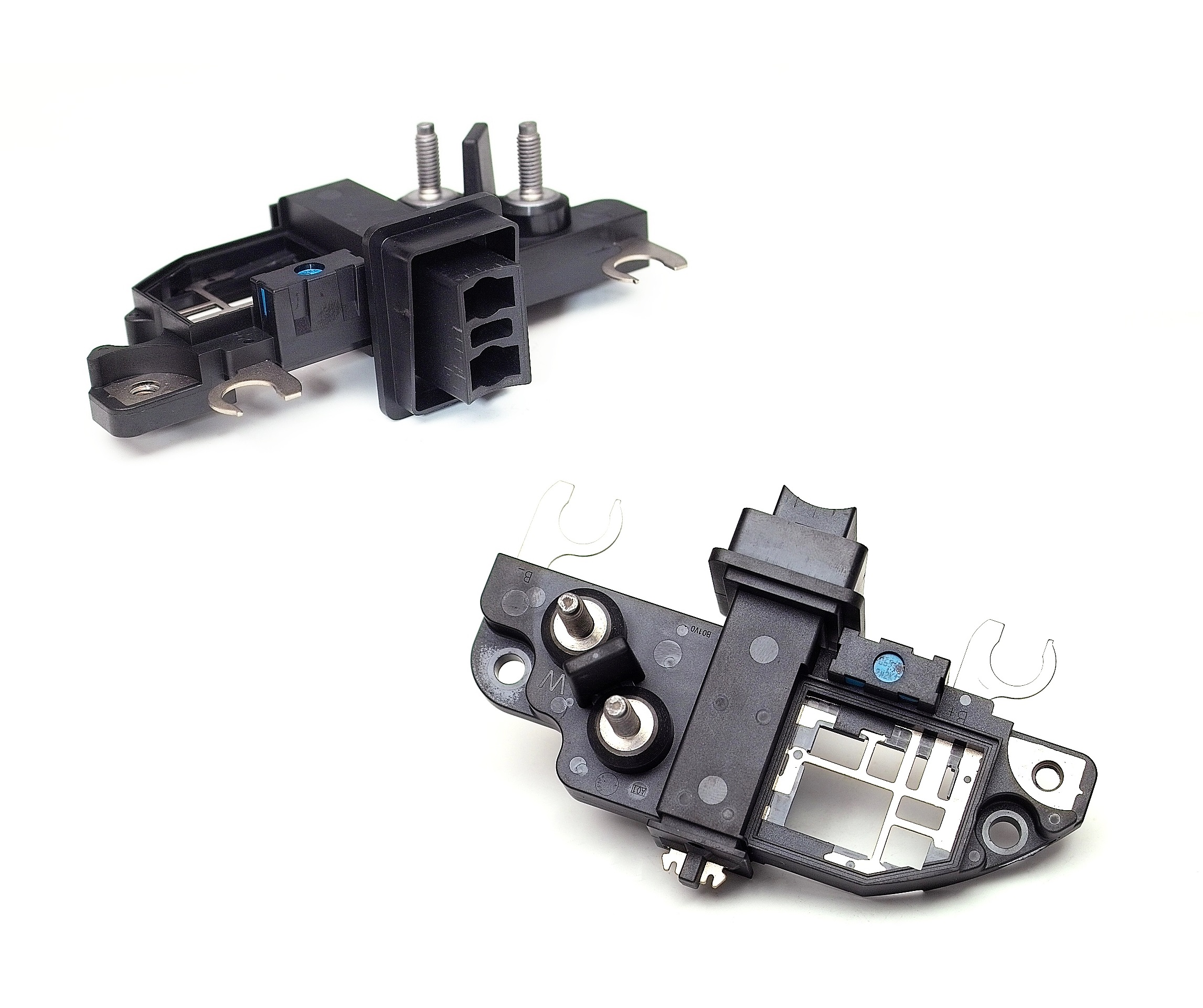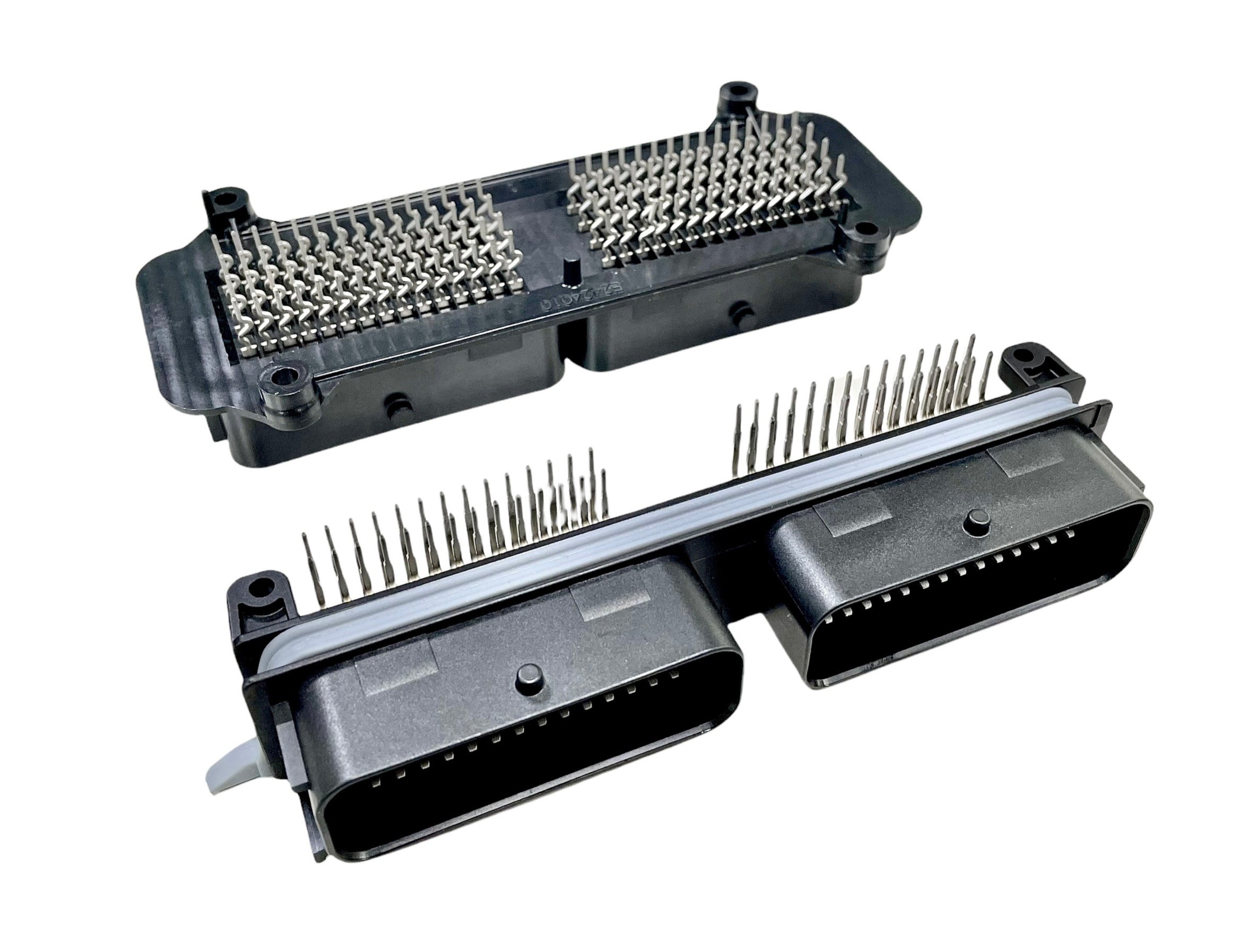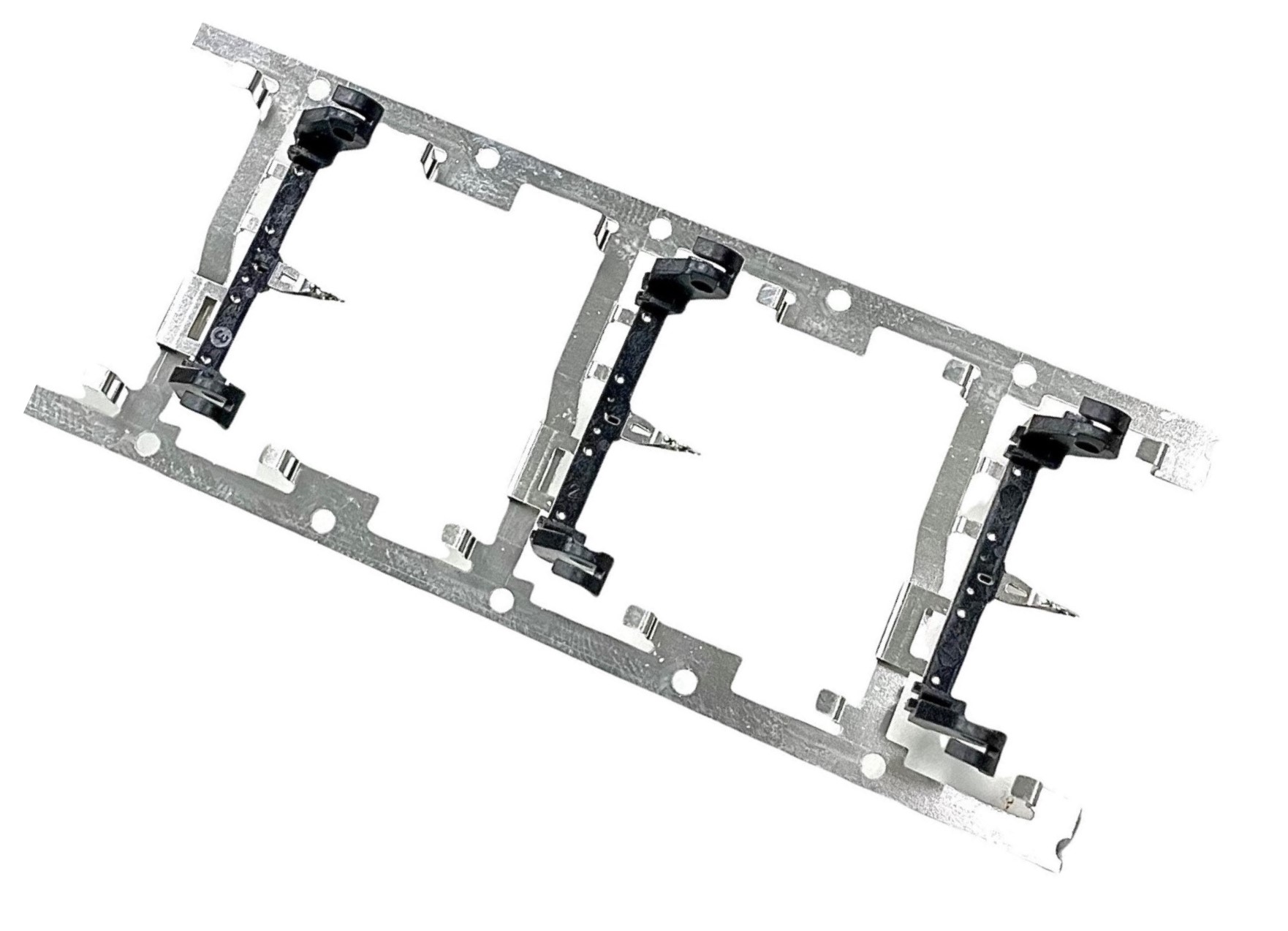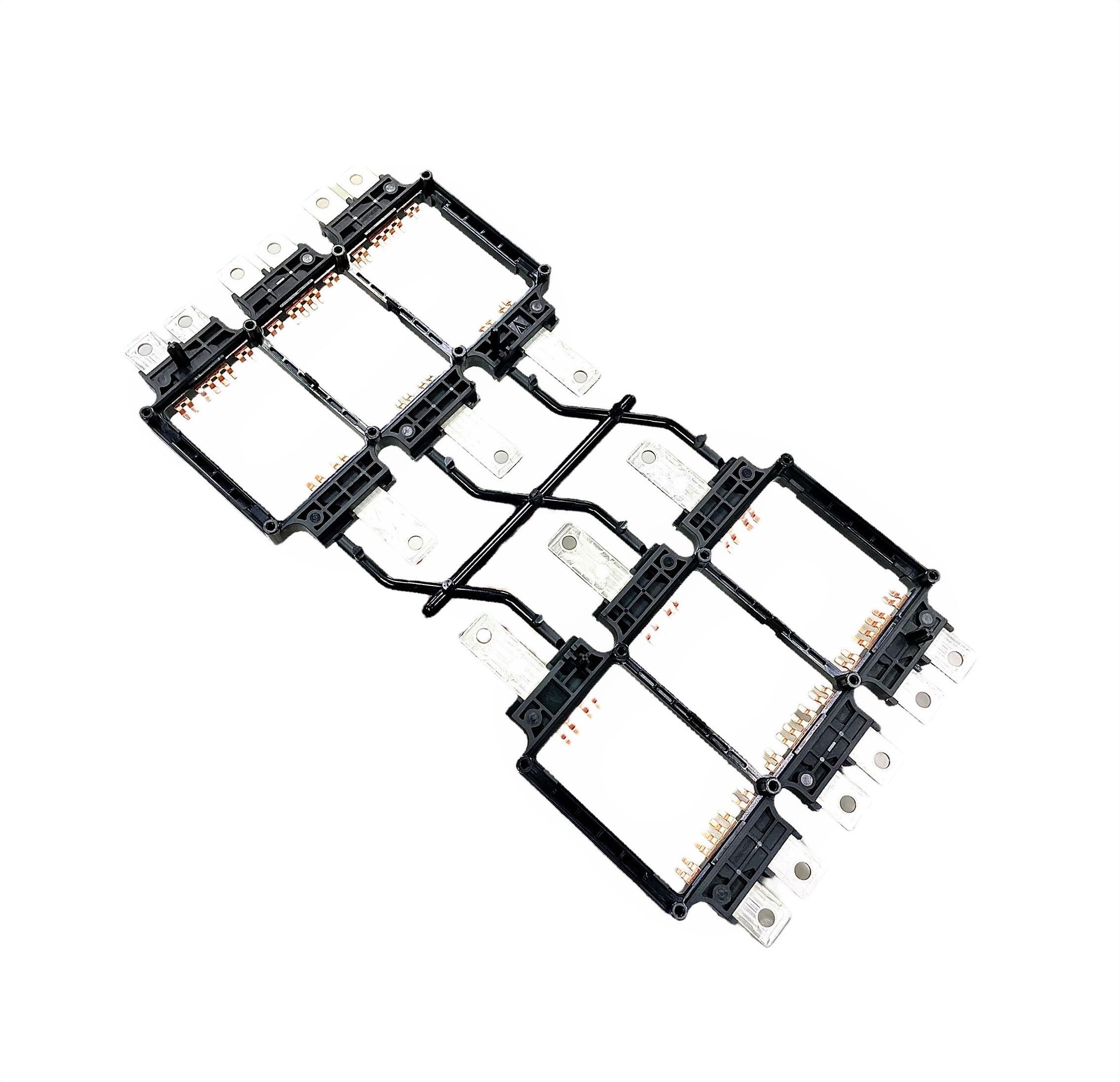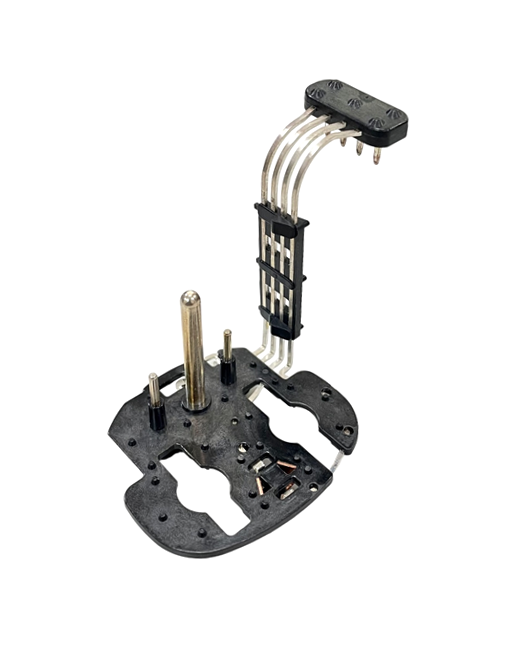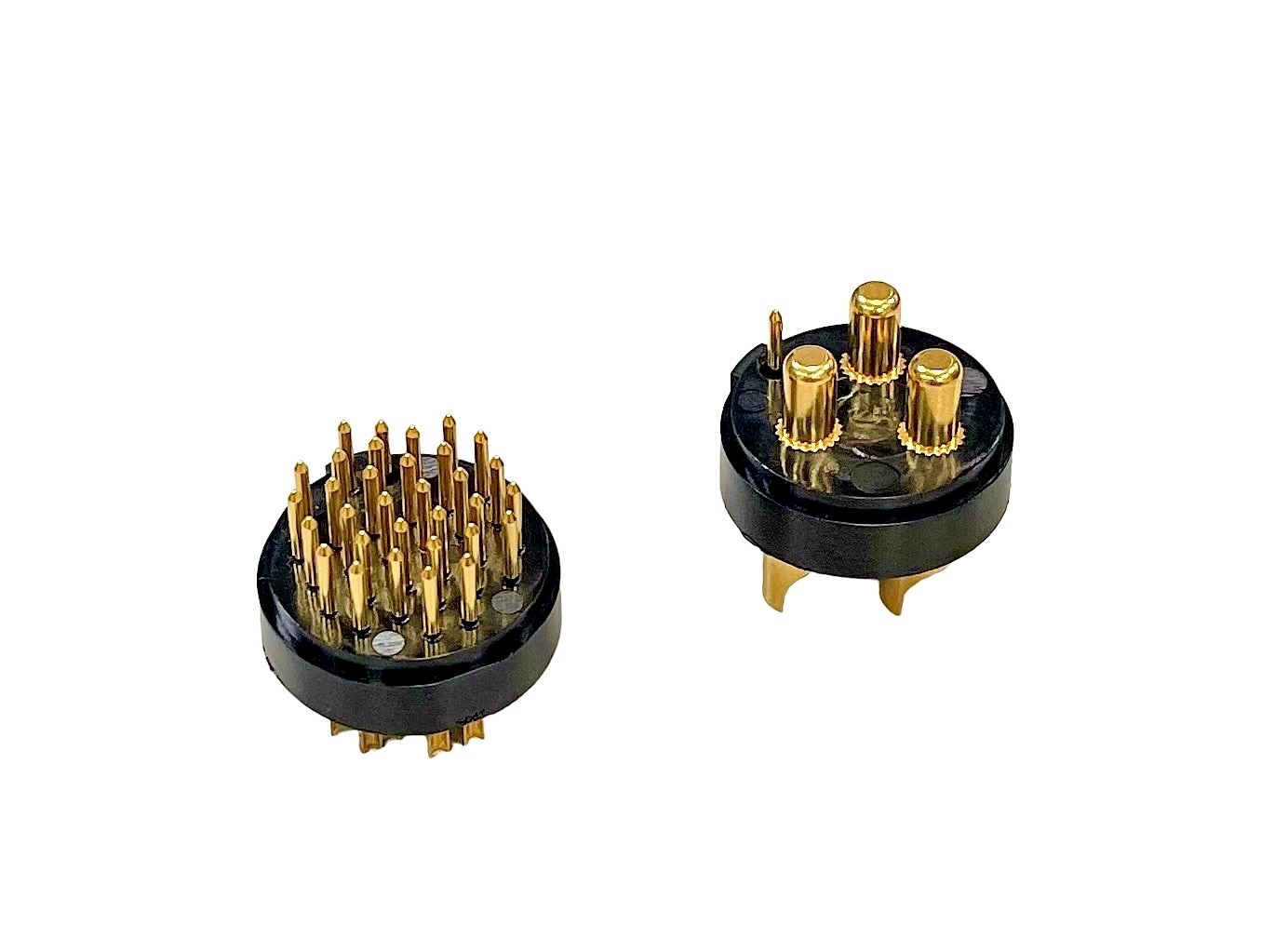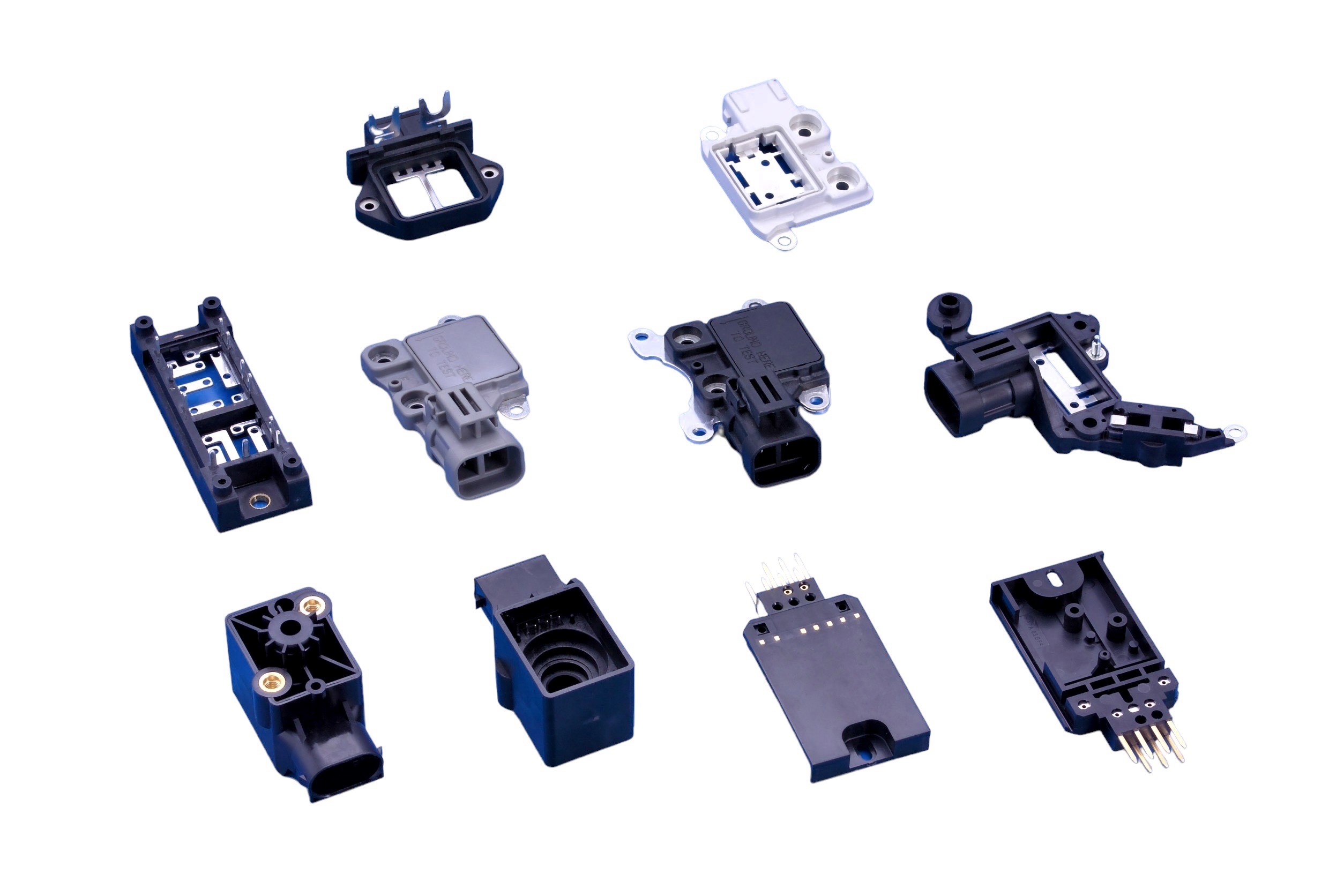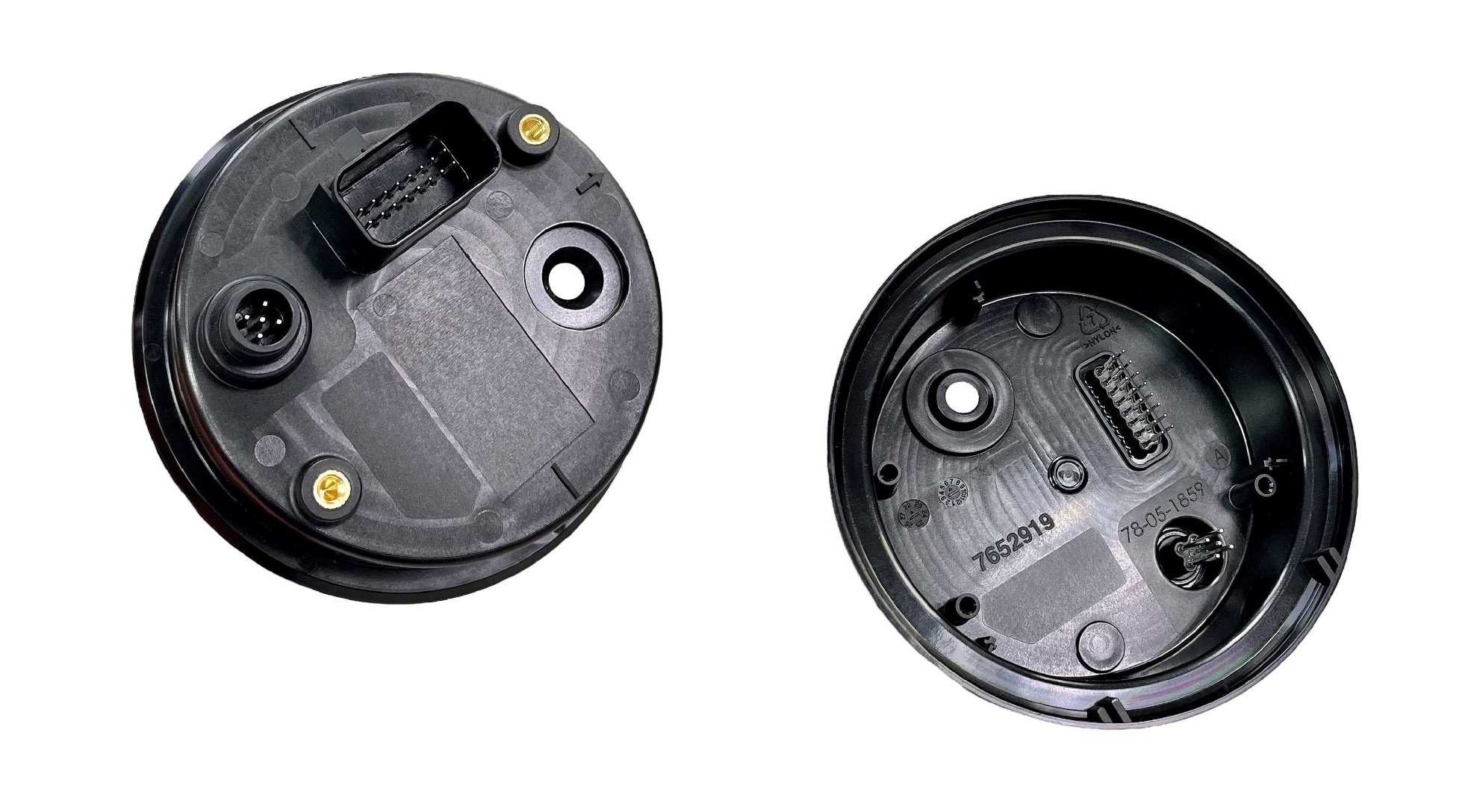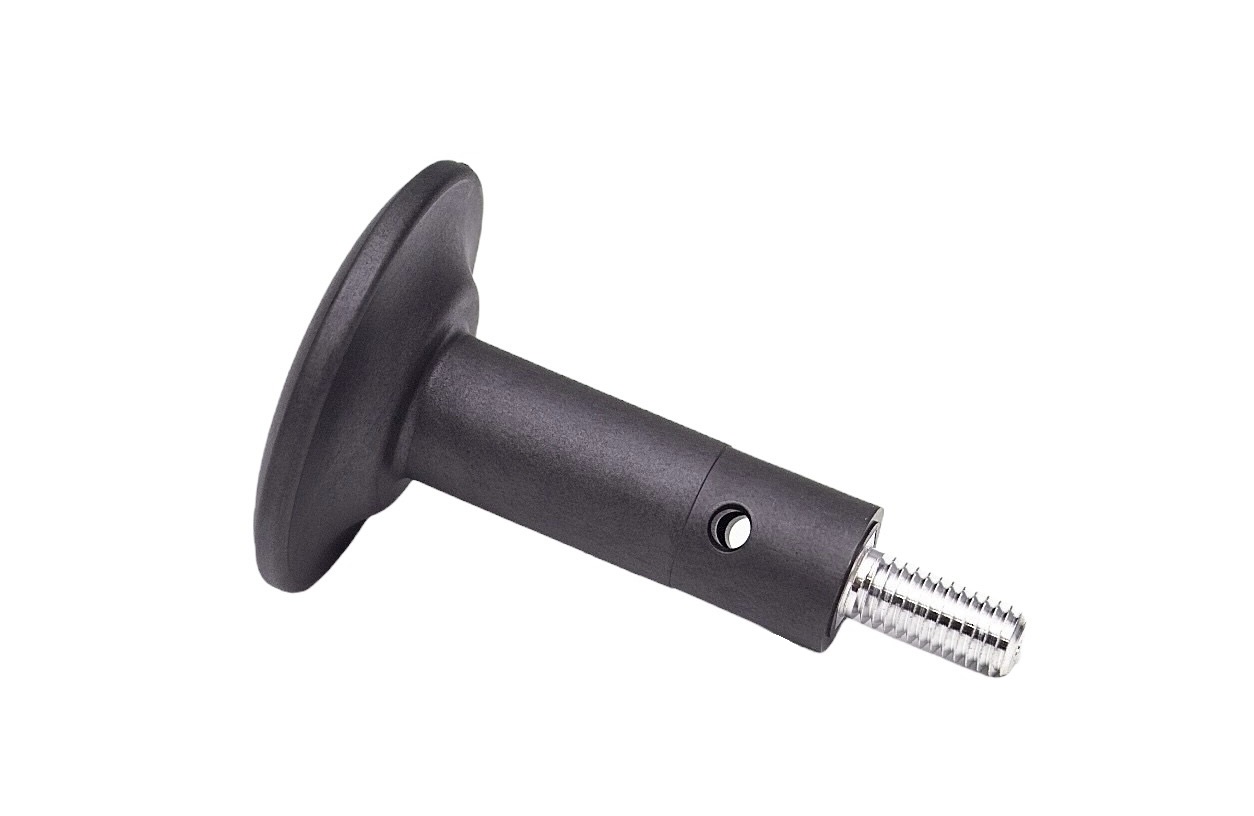Blog
Unlock Potential with Expert Insert Molding Solutions
Unlock Potential with Expert Insert Molding Solutions
For manufacturers in the advanced German industry, maximizing manufacturing efficiency and precision is crucial to stay competitive. One innovative solution that can help unlock this potential is insert molding. By combining plastic or metal inserts with molded materials, insert molding offers numerous benefits in terms of product quality, assembly time, and design flexibility.
When it comes to insert molding, seeking the expertise of experienced providers is essential. With their in-depth knowledge and advanced technologies, these experts can ensure precise insert placement and overcome common challenges, delivering consistent quality. This article explores the various aspects of insert molding, from its definition to the role of automation and its specific applications in the German industry.
Key Takeaways:
- Insert molding combines plastic or metal inserts with molded materials to enhance manufacturing efficiency and precision.
- Expert insert molding providers offer precise insert placement and overcome challenges to achieve consistent quality.
- Automation plays a vital role in insert molding, increasing productivity and reducing errors.
- Insert molding solutions cater to the unique needs of the advanced German industry.
- Showcased case studies highlight the effectiveness and potential of insert molding in various industries.
What is Insert Molding?
Insert molding is a fundamental technique in the field of manufacturing that offers numerous benefits to industries across various sectors. It involves the process of combining plastic or metal inserts with molded materials to create finished products with exceptional precision and efficiency. This innovative method allows for the seamless integration of different components, providing enhanced functionality and improved aesthetics in the final product.
Insert molding provides manufacturers with the opportunity to create complex and intricate designs by incorporating diverse materials into a single piece. The process begins with the placement of the insert into the mold, followed by the injection of molten material around it. The molten material fills the gaps and forms a strong bond with the insert, ensuring a robust and seamless integration.
This technique eliminates the need for separate assembly processes, reducing both labor costs and assembly time. By including inserts directly into the mold, manufacturers can streamline their production line, improve overall efficiency, and achieve consistent quality throughout the manufacturing process.
Moreover, insert molding enables design flexibility, allowing for the creation of products with unique features and specifications. This technique empowers manufacturers to optimize product performance by combining different materials, enhancing structural integrity, thermal conductivity, or electrical properties. With insert molding, manufacturers have a wide range of customization options at their disposal, making it a valuable tool for meeting the specific requirements of diverse industries.
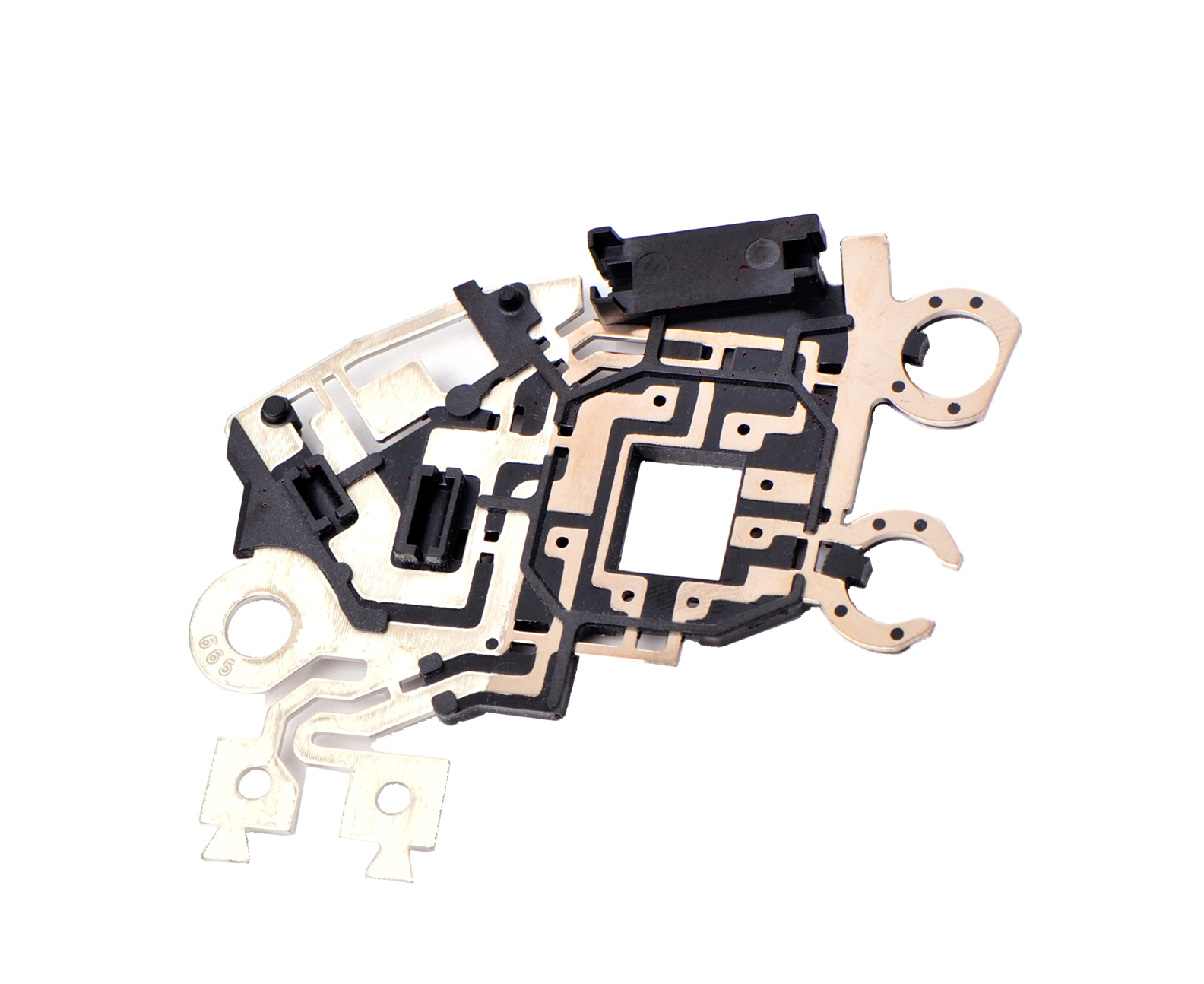
The Advantages of Insert Molding
Insert molding offers a multitude of advantages that make it an invaluable solution in modern manufacturing processes. By combining plastic or metal inserts with molded materials, manufacturers can achieve superior product quality, reduce assembly time and costs, and enjoy increased design flexibility.
Improved Product Quality:
Insert molding ensures a secure bond between the insert and the surrounding material, resulting in enhanced product durability and reliability. The encapsulated inserts provide increased strength and stability, improving the overall performance of the final product.
Reduced Assembly Time and Costs:
One of the significant advantages of insert molding is its capacity to streamline the manufacturing process. By integrating multiple components into a single mold, assembly time is significantly reduced. Additionally, fewer parts and components are required, resulting in lower production costs and decreased inventory management complexities.
Enhanced Design Flexibility:
Insert molding allows for intricate and complex designs that would be difficult to achieve through traditional manufacturing methods. By integrating different materials and components seamlessly, designers have more freedom to create innovative and visually compelling products. This flexibility extends to the incorporation of various textures, colors, and finishes, enabling manufacturers to meet diverse customer preferences and market demands.
Cost-Effective Prototyping:
Insert molding also offers advantages in the prototyping phase of product development. With the ability to combine different materials and components, manufacturers can quickly produce functional prototypes that closely resemble the final product. This allows for thorough testing and validation before proceeding with full-scale production, avoiding costly design iterations and potential rework.
Reduced Post-Processing:
Another notable advantage of insert molding is its ability to minimize post-processing requirements. By incorporating inserts directly into the mold, manufacturers can eliminate separate assembly steps and reduce the need for manual finishing. This results in improved efficiency, faster turnaround times, and ultimately, reduced costs.
| Advantages of Insert Molding | Description |
| Improved Product Quality | Secure bond between insert and material for enhanced durability and reliability. |
| Reduced Assembly Time and Costs | Streamlined manufacturing process, fewer parts, and decreased production costs. |
| Enhanced Design Flexibility | Freedom to create intricate designs with various materials, textures, and finishes. |
| Cost-Effective Prototyping | Ability to produce functional prototypes that closely resemble final products. |
| Reduced Post-Processing | Minimized need for manual finishing, improving efficiency and reducing costs. |
Key Considerations for Insert Molding Design
When designing for insert molding, it is crucial to take into account several key considerations to ensure optimal results. From material selection to part geometry, each factor plays a significant role in the success of insert molding projects. Collaboration between designers and molders is also essential to achieve the desired outcome. Let's explore these design considerations in more detail.
Material Selection
The choice of materials used in insert molding directly impacts the performance and durability of the final product. It is important to select materials that are compatible with both the inserts and the molded material. Factors such as temperature resistance, mechanical properties, and chemical compatibility should be carefully evaluated to ensure a strong bond and proper functionality of the finished product.
Draft Angles
Draft angles are crucial in insert molding design, as they facilitate the release of the part from the mold. The incorporation of appropriate draft angles reduces the risk of part distortion and improves the overall quality of the molded component. In general, draft angles of at least 1-2 degrees are recommended, with larger angles facilitating easier ejection from the mold.
Part Geometry
The geometry of the part must be carefully considered to ensure proper insert placement and effective molding. Complex shapes or intricate designs may pose challenges during the molding process, leading to quality issues or insert movement. Simplifying part geometry and optimizing design for insert molding can result in superior products with improved efficiency and reduced manufacturing costs.
Collaboration Between Designers and Molders
Effective communication and collaboration between designers and molders are fundamental to successful insert molding projects. Close collaboration allows for the exchange of valuable insights and expertise, ensuring that design considerations are aligned with the capabilities and limitations of the molding process. Through collaboration, designers can gain invaluable feedback from molders, leading to optimized designs and streamlined production.
By considering these key design factors, manufacturers can maximize the advantages of insert molding and achieve superior quality products with enhanced efficiency and precision.
| Design Consideration | Description |
|---|---|
| Material Selection | Choose materials compatible with inserts and molded material for optimal bond and functionality. |
| Draft Angles | Incorporate appropriate draft angles to facilitate part release from the mold. |
| Part Geometry | Optimize part geometry to ensure proper insert placement and effective molding. |
| Collaboration Between Designers and Molders | Establish effective communication and collaboration between designers and molders for optimized designs and streamlined production. |
Ensuring Precise Insert Placement
When it comes to insert molding, achieving precise insert placement is crucial to ensure the integrity and functionality of the final molded parts. The accuracy of insert positioning plays a significant role in the overall quality and performance of the product.
To guarantee precise insert placement, manufacturers employ a variety of techniques and technologies. One commonly used method is the use of specially designed molds and fixtures that securely hold the inserts in position during the molding process. These molds and fixtures are engineered with precision to ensure that the inserts are aligned correctly within the mold cavity.
Another approach to precise insert placement is the use of automation systems. Advanced robotic systems can accurately position and place inserts into the mold, eliminating human errors and inconsistencies. These automated solutions not only enhance accuracy but also increase production efficiency, allowing for faster and more reliable insert molding processes.
“Precise insert placement is essential in insert molding to ensure the proper functioning and reliability of the final products. By utilizing advanced technologies and automation, manufacturers can achieve impeccable insert positioning, resulting in superior product quality and increased manufacturing efficiency.”
Experts in insert molding emphasize the significance of precise insert placement. According to John Schmidt, a renowned insert molding specialist, "Accurate positioning of inserts within molded parts is critical to achieving optimal product performance and durability. It is essential to leverage the right techniques and technologies to achieve this level of precision."
Overcoming challenges for precise insert placement
While achieving precise insert placement is essential, it can pose certain challenges during the insert molding process. One common challenge is insert movement within the mold cavity, which can result in misalignment and compromised product integrity. Manufacturers mitigate this issue by designing molds with features such as mechanical locks or adhesive coatings to restrict insert movement during the molding process.
Adhesion between the insert and the molded material can also impact precise insert placement. To ensure a strong bond and prevent displacement, surface treatments such as plasma cleaning or chemical bonding agents may be employed. These treatments enhance the adhesion between the insert and the molded material, resulting in improved insert positioning.
Consistency in achieving precise insert placement is another challenge manufacturers face. Variations in material shrinkage, mold temperature, and molding parameters can affect the accuracy of insert positioning. To address this, manufacturers carefully analyze and optimize the molding process parameters, ensuring that the conditions are consistent and conducive to achieving precise insert placement.
The importance of precise insert placement in German industry
In the advanced German industry, precision and efficiency are highly valued. This makes precise insert placement an imperative for manufacturers seeking to meet the stringent quality standards and demands of the German market. By ensuring accurate insert positioning, manufacturers can deliver superior products that align with the industry's expectations.
Dr. Hans Weber, a German industry expert, highlights the significance of precise insert placement for the German manufacturing sector. According to Dr. Weber, "German industries, renowned for their precision and engineering excellence, require insert molding solutions that guarantee exact insert placement. This level of accuracy is crucial to meeting the industry's high standards and maintaining a competitive edge."
Overall, precise insert placement is vital to the success of insert molding processes. By employing the right techniques, technologies, and strategies, manufacturers can achieve impeccable insert positioning, leading to enhanced product quality, improved manufacturing efficiency, and greater success in the advanced German industry.
Advanced Insert Molding Equipment
When it comes to insert molding, staying on the cutting edge of technology is crucial to achieving optimal results. The use of advanced equipment and machinery plays a significant role in facilitating efficient and precise insert molding processes.
Leading manufacturers are continuously investing in state-of-the-art equipment that combines innovation and versatility to meet the demands of insert molding applications. These advanced machines are specifically designed to handle the complexities of insert molding, ensuring seamless integration between the inserts and the molded materials.
One such advancement in insert molding equipment is the integration of robotics and automation. Automation streamlines the production process, reducing manual labor and enhancing productivity. It allows for high-speed and consistent insert placement, minimizing the risk of errors and maximizing manufacturing efficiency.
Robotic Insert Placement
Robotic insert placement systems have revolutionized the insert molding industry. These systems use advanced vision technology to identify the precise location and orientation of the inserts, guaranteeing accurate and repeatable placement.
With robotic insert placement, manufacturers can achieve precise control over insert positioning, ensuring optimal adhesion and alignment. This level of precision enhances product quality and reduces the need for post-molding adjustments, saving time and costs in the production process.
In addition to robotics, advancements in mold design and development have also contributed to the efficiency of insert molding equipment. Mold makers now incorporate intricate features and mechanisms that enable seamless insert integration and enhanced part functionality.
Heat and Pressure Control
Another area of advancement in insert molding equipment is the control of heat and pressure during the molding process. Manufacturers have developed sophisticated systems that monitor and regulate these variables, ensuring consistent and uniform results.
Precise control of heat and pressure is essential for achieving optimal adhesion between the inserts and the molding material. This control minimizes the risk of insert movement during the molding process, resulting in stronger bonds and higher product reliability.
Machine Integration and Data Analysis
Integration of insert molding equipment with data analysis systems allows manufacturers to monitor and analyze crucial process parameters in real-time. This integration provides valuable insights into the performance and efficiency of the insert molding process.
Data-driven analysis enables manufacturers to identify potential issues and make adjustments to optimize production. It allows for continuous improvement and enhances quality control, ensuring that each insert molded product meets the highest standards.
| Benefit | Description |
|---|---|
| Enhanced Efficiency | The use of advanced equipment streamlines the insert molding process, reducing cycle times and increasing overall productivity. |
| Precision and Accuracy | Advanced machinery ensures precise insert placement, resulting in consistent product quality and reduced assembly time. |
| Improved Design Flexibility | The integration of innovative equipment allows for complex part geometries and versatile insert materials, enabling greater design flexibility. |
As the demand for insert molded products continues to grow, investing in advanced insert molding equipment becomes increasingly crucial. Manufacturers who embrace these technological advancements can unlock the full potential of insert molding, meeting the needs of the advanced German industry and gaining a competitive edge in the market.
Overcoming Challenges in Insert Molding
Insert molding offers numerous advantages in the manufacturing process, such as improved product quality, reduced assembly time, and enhanced design flexibility. However, like any manufacturing technique, insert molding also presents its own set of challenges. Understanding and addressing these challenges is crucial for successful insert molding implementation. This section will discuss common challenges faced in insert molding and strategies to overcome them.
1. Insert Movement
One of the key challenges in insert molding is managing insert movement during the molding process. Inserts may shift or rotate, resulting in alignment issues and compromised part quality. To overcome this challenge, precise and reliable insert fixation techniques must be employed. Specialized tooling, such as insert-specific mold features or mechanical locking mechanisms, can ensure the stability and proper positioning of inserts, minimizing movement during molding.
2. Adhesion
Promoting robust adhesion between the insert and molded material is critical to achieve strong and reliable bond strength. However, adhesion challenges can arise due to material compatibility issues or surface contaminants on the insert. Thorough cleaning and surface treatment processes, such as plasma or flame treatment, can improve adhesion by enhancing surface energy and removing any contaminants. Additionally, utilizing compatible materials and optimizing molding parameters can further enhance adhesion between the insert and the molded material.
3. Achieving Consistent Quality
Consistency in insert molding processes is essential for maintaining high-quality production. Achieving consistent quality can be challenging due to variations in insert placement, molding parameters, or material flow. Regular monitoring and inspections during production can help identify any variations or defects early on. Employing automated monitoring systems and implementing precise process controls can also contribute to achieving consistent quality throughout the insert molding process.
Addressing challenges in insert molding is crucial for maximizing the benefits it offers and ensuring successful production. By implementing strategies to overcome insert movement, enhancing adhesion, and maintaining consistent quality, manufacturers can navigate the challenges and unlock the full potential of insert molding.
The Role of Automation in Insert Molding
Automation plays a crucial role in optimizing insert molding processes, offering numerous benefits to manufacturers. By incorporating automated systems, companies can achieve increased productivity, reduced errors, and enhanced consistency throughout their insert molding operations.
One of the key advantages of automation in insert molding is its ability to improve production efficiency. Automated systems streamline the manufacturing workflow by eliminating manual tasks and reducing the need for human intervention. This results in faster cycle times and higher output, allowing manufacturers to meet growing demand and maximize their production capabilities.
Moreover, automation significantly reduces the risk of errors in insert molding processes. Automated systems ensure precise and accurate placement of inserts, eliminating the potential for misalignment or improper positioning. This not only improves the overall quality of the finished products but also minimizes the need for rework or repairs, saving time and resources.
Consistency is another crucial aspect that automation brings to insert molding. By implementing automated systems, manufacturers can achieve consistent and repeatable results in their molding operations. Automated processes ensure that every insert is placed with the same precision and accuracy, resulting in uniform product quality across the entire production line.
Furthermore, automation in insert molding enables seamless integration with other manufacturing systems and technologies. Automated systems can be easily integrated into existing workflows, providing a seamless transition and enhancing overall process efficiency. This integration also allows for real-time monitoring and data analysis, enabling manufacturers to identify and address potential issues promptly.
"Automation in insert molding streamlines the manufacturing process, improves productivity, reduces errors, and ensures consistent quality."
Case Study: Automation Boosts Productivity
A leading German automotive parts manufacturer utilized automation in their insert molding processes to enhance productivity. By integrating robotic systems for insert placement and material handling, the company achieved a significant increase in production output. The automated systems not only reduced cycle times but also ensured precise insert positioning, resulting in consistently high-quality products. This successful implementation of automation highlights its role in driving efficiency and competitiveness in insert molding operations.
| Benefits of Automation in Insert Molding | Explanation |
|---|---|
| Increased productivity | Automation eliminates manual tasks, resulting in faster cycle times and higher output. |
| Reduced errors | Automated systems ensure precise insert placement, minimizing the risk of misalignment or improper positioning. |
| Enhanced consistency | Automation delivers consistent and repeatable results, ensuring uniform product quality. |
| Seamless integration | Automated systems can be easily integrated into existing workflows, allowing for real-time monitoring and analysis. |
Insert Molding in the German Industry
The German industry, known for its advanced manufacturing capabilities and high standards of precision, relies heavily on innovative solutions to meet evolving demands. In this context, insert molding has emerged as a critical technique that addresses the unique needs of the sector. By combining plastic or metal inserts with molded materials, insert molding enables the creation of complex and durable products that uphold the industry's reputation for excellence.
Insert molding offers several advantages that align perfectly with the requirements of the German industry. The seamless fusion of multiple components into a single finished product enhances manufacturing efficiency, reduces assembly time, and enables cost savings. Moreover, the design flexibility provided by insert molding allows for intricate geometries and intricate structures, empowering manufacturers to push the boundaries of what's possible.
When incorporating insert molding into their processes, German manufacturers value the precision and consistency it brings to their products. The ability to ensure accurate insert placement, even with complex part geometries, eliminates the risk of assembly errors and guarantees reliable performance. This level of precision is crucial for industries such as automotive, medical devices, and electronics, where safety, reliability, and quality are paramount.
Quote:
"Insert molding has revolutionized our production process. It not only streamlines our assembly operations but also elevates the quality and durability of our products. This technique perfectly aligns with the stringent requirements of the German industry, enabling us to stay ahead in a highly competitive market."
— Lisa Müller, Production Manager at a leading German automotive components manufacturer
Applications in the German Industry
Insert molding has found widespread applications across various sectors of the German industry. In the automotive industry, manufacturers utilize insert molding to create components such as connectors, sensors, and interior trims with integrated inserts for enhanced functionality. In the medical device sector, insert molding enables the production of complex devices and implants with embedded metal electronics or surgical instruments, ensuring precision and reliability.
The electronics industry benefits from the use of insert molding for creating circuit boards, connectors, and housings with integrated metal inserts, optimizing electrical performance and structural integrity. Additionally, insert molding finds application in industrial equipment manufacturing, where it enables the production of robust parts with embedded sensors, threaded inserts, and reinforcement elements.
Industries Leveraging Insert Molding in the German Market
| Industry | Applications |
|---|---|
| Automotive | Connectors, sensors, interior trims |
| Medical Devices | Implants, surgical instruments, devices with metal electronics |
| Electronics | Circuit boards, connectors, housings |
| Industrial Equipment | Sensors, threaded inserts, reinforcement elements |
The integration of insert molding in the German industry not only improves the overall quality and performance of products but also fosters innovation and competitiveness. With expert providers in the market offering tailored solutions, manufacturers can benefit from their expertise and experience in optimizing insert molding processes specifically for the demands of the German industry.
Expert Insert Molding Providers in Germany
When it comes to insert molding solutions in Germany, partnering with expert providers can make all the difference. These trusted and experienced professionals have the knowledge and skills to deliver exceptional results, ensuring the success of your insert molding projects.
So, what should you look for when selecting an insert molding provider in Germany? Firstly, expertise is key. An expert provider will have a deep understanding of the insert molding process, including the materials, design considerations, and technical requirements involved. This expertise allows them to offer valuable insights and recommendations, ensuring optimal results.
In addition to expertise, industry knowledge is crucial. An expert insert molding provider in Germany will have a strong background in the manufacturing industry, specifically catering to the needs of the advanced German market. They will be well-versed in the latest industry trends, regulations, and quality standards, ensuring that your insert molding projects meet the highest level of precision and quality.
Collaboration is another essential quality to look for in an insert molding provider. A partnership built on open communication and collaboration allows for a seamless integration of your design requirements and the provider's technical expertise. This collaborative approach leads to efficient workflows and timely project completion, saving you both time and resources.
When selecting an insert molding provider in Germany, reputation and track record play a significant role. Look for providers who have a proven history of delivering high-quality insert molding solutions to satisfied clients. Research their portfolio, customer reviews, and testimonials to get a sense of their capabilities and the level of customer satisfaction they consistently achieve.
Lastly, consider the range of services offered by the insert molding provider. Are they able to handle various project sizes and complexities? Do they have the necessary equipment and facilities to accommodate your specific needs? This comprehensive approach ensures that you have a reliable partner who can support your insert molding requirements now and in the future.
Why Choose Expert Insert Molding Providers in Germany?
"Partnering with expert insert molding providers in Germany empowers manufacturers to leverage the expertise and industry knowledge required to unlock the full potential of their insert molding projects. These professionals offer a unique combination of technical skills, collaborative approach, and reputation for excellence, ensuring precision, efficiency, and success."
Key Qualities to Look for in an Expert Insert Molding Provider
| Qualities | Description |
|---|---|
| Expertise | A deep understanding of insert molding process and technical requirements |
| Industry Knowledge | Familiarity with the advanced German industry and its specific needs |
| Collaboration | An open communication approach for seamless integration of design requirements |
| Reputation | A proven track record of delivering high-quality insert molding solutions |
| Range of Services | The capability and resources to handle various project sizes and complexities |
Choosing an expert insert molding provider in Germany ensures that you have a reliable and knowledgeable partner by your side. With their expertise, industry knowledge, and commitment to collaboration, you can unlock the full potential of your insert molding projects, achieving precision, efficiency, and manufacturing excellence.
Case Studies: Successful Insert Molding Applications
This section presents real-life case studies that highlight the effectiveness and potential of insert molding in various industries and products.
Automotive Industry: Improved Durability and Efficiency
One notable case study involves a leading automotive manufacturer that sought to enhance the durability and efficiency of their electrical connectors. By applying insert molding techniques, they successfully incorporated metal contacts into their plastic connectors, improving reliability and reducing the risk of electrical failures. The seamless integration of the metal inserts ensured a secure and long-lasting connection, enhancing the overall performance of the connectors in demanding automotive applications.
Medical Device Manufacturing: Streamlined Production and Enhanced Functionality
In another case study, a medical device company aimed to streamline their production process while ensuring precise functionality. Through insert molding, they integrated complex metal components, such as needles and electrodes, into their plastic injection-molded parts. This not only simplified assembly and reduced production time but also improved the functionality and reliability of their medical devices. The resulting products exhibited high precision and consistency, meeting the stringent quality requirements of the medical industry.
Consumer Electronics: Design Versatility and Aesthetics
A renowned consumer electronics brand sought to create sleek and visually appealing products without compromising on functionality. By utilizing insert molding techniques, they combined plastic components with metal inserts to achieve the desired design aesthetics while maintaining structural integrity. This approach allowed for precise and secure installation of connectors, buttons, and other components, resulting in products that not only looked sophisticated but also functioned seamlessly.
Electrical Appliances: Enhanced Safety and Reliability
An electrical appliance manufacturer aimed to improve the safety and reliability of their products. Through insert molding, they integrated metal inserts into plastic enclosures, fortifying critical areas prone to stress and impact. This approach increased the strength and durability of the products, ensuring they could withstand rigorous use and maintain their quality even in challenging environments. By effectively fusing metal and plastic, the manufacturer achieved the desired level of safety and reliability, earning them a reputation for producing high-performance electrical appliances.
Industrial Equipment: Improved Performance and Cost-efficiency
One case study involved an industrial equipment manufacturer aiming to enhance the performance and cost-efficiency of their products. By incorporating insert molding, they integrated metal inserts into plastic components used in their machinery. This resulted in enhanced structural integrity and reduced weight, contributing to better overall performance. Moreover, the efficient production process led to cost savings, making the manufacturer more competitive in the market.
These real-life case studies exemplify the wide-ranging benefits and applications of insert molding in diverse industries. From automotive and medical devices to consumer electronics and industrial equipment, insert molding offers solutions that enhance functionality, durability, design versatility, safety, and cost-efficiency. These success stories demonstrate how manufacturers can leverage insert molding to unlock the full potential of their products and gain a competitive edge in the market.
Conclusion
In conclusion, insert molding solutions offer a wide range of benefits for manufacturers seeking to enhance efficiency and precision in their processes. By combining plastic or metal inserts with molded materials, insert molding enables the creation of finished products with improved quality, reduced assembly time and costs, and greater design flexibility.
For the advanced German industry, which demands high levels of precision and manufacturing excellence, incorporating insert molding can be a game-changer. It allows companies to meet the unique needs of this industry by delivering superior quality products and increasing overall productivity.
As technology continues to advance, it is essential for manufacturers to stay ahead of the curve. By leveraging the latest advancements in advanced equipment and automation, they can optimize insert molding processes and achieve consistent, reliable results.
Therefore, it is crucial for companies in the German industry to partner with expert insert molding providers who possess deep knowledge and experience in this field. By collaborating with such providers, manufacturers can unlock the full potential of insert molding solutions, driving innovation and success in their respective industries.
FAQ
What is insert molding?
Insert molding is the process of combining plastic or metal inserts with molded materials to create finished products. It allows for the efficient and precise integration of various components, resulting in enhanced product quality and design flexibility.
What are the advantages of insert molding?
Insert molding offers several advantages in manufacturing processes. It improves product quality by ensuring secure insert placement and eliminating the need for additional assembly steps. It reduces assembly time and costs, as multiple components can be molded in a single operation. It also enhances design flexibility, as inserts can be integrated into complex part geometries.
What are the key considerations for insert molding design?
When designing for insert molding, several factors should be taken into consideration. These include material selection, draft angles, part geometry, and the collaboration between designers and molders. Careful planning and communication are essential to ensure the successful integration of inserts into molded parts.
How can precise insert placement be ensured in insert molding?
Precise insert placement in insert molding can be ensured through various techniques and technologies. These include the use of precision molds, automated systems, and advanced positioning mechanisms. These ensure accurate and consistent positioning of inserts within molded parts, resulting in high-quality finished products.
What kind of equipment is used in advanced insert molding?
Advanced insert molding utilizes cutting-edge equipment and machinery. This includes high-precision injection molding machines, robotics for automated processes, and advanced tooling systems. These technologies enable efficient and precise insert molding processes, resulting in higher productivity and improved product quality.
What challenges can arise in insert molding?
Insert molding can present challenges such as insert movement during molding, achieving proper adhesion between the insert and the molded material, and ensuring consistent quality throughout the production process. However, these challenges can be overcome through proper design considerations, material selection, and process optimization.
What is the role of automation in insert molding?
Automation plays a crucial role in insert molding processes. It helps increase productivity by reducing manual labor, minimizing errors, and ensuring consistency in the production of molded parts. Automated systems can handle complex processes and repetitive tasks with precision, resulting in improved efficiency and overall process control.
How is insert molding utilized in the German industry?
Insert molding holds significant importance in the advanced German industry. Its efficient processes and precise integration of components cater to the industry's needs for manufacturing efficiency and precision. German manufacturers rely on insert molding solutions to enhance product quality, reduce costs, and improve overall manufacturing capabilities.
Who are the expert insert molding providers in Germany?
Germany is home to several trusted and experienced insert molding providers. These expert professionals have deep industry knowledge and offer tailored solutions to meet the specific needs of manufacturers. It is important to look for providers who have a proven track record, extensive expertise, and a commitment to quality and customer satisfaction.
Can you provide examples of successful insert molding applications?
Certainly! There are numerous successful case studies that highlight the effectiveness of insert molding. These case studies showcase industries such as automotive, medical, electronics, and consumer goods, where insert molding has provided significant benefits. Examples include the integration of electrical connectors in automotive components, insert-molded medical devices, and the consolidation of multiple parts in electronic enclosures.

